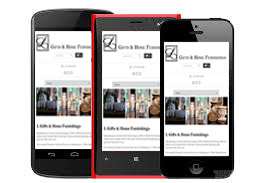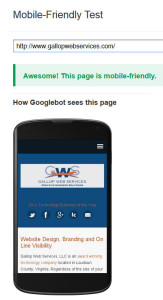Does My Business Need a Mobile Website?

For most businesses, an ideal website will be responsive to desktop computers, tablets and smart phones. When planning to design or redesign your website, however, you need to consider if you want to target a mobile audience. If so, what do you want to convey to them through mobile? Some statistics…
- 56% of people who own cell phone use their phone to go online
- 50% of smart phone owners use their phones for social media every day
- 34% of mobile website users would visit a competitor’s mobile site, if they had a bad mobile experience with a business
- 30% use their phone to decide whether to visit a local business, such as a restaurant or retail store
Top activities on Smartphones:
- access local information (maps, directions)
- search for general information
- participate in social media
- access news and entertainment
- find local services (ie., restaurants)
Since over half of cell phone users go online with their mobile devices, many businesses (especially local storefronts and restaurants) would benefit from a mobile site. To avoid frustrating your audience, consider the following details:
Mobile Web Design should:
- keep branding elements (logo, colors, etc.) consistent with the desktop website version
- simplify navigation, so it is easy to understand and select options from a smaller screen
- be thumb friendly–easy to click with little typing needed
- give an option to view the full website version
- use white space and minimal text for better viewing
- clearly show contact information, directions and map
If you think you need to have your website accessible by phone, then consider the design, target audience and goals. Analytic tracking of mobile activity is a must and should be implemented to gauge the value of the mobile site. Otherwise, how will you know if your efforts have delivered a good return on your investment?
Statistical data from Pew Internet
 Starting April 21, 2015 Google is making changes to their search algorithms with regard to mobile usability. In the past, Google has made it easier for search users to find mobile-friendly websites and useful content from app. They rightly state “that as more people use mobile devices to access the internet, our algorithms have to adapt to these usage patterns.” The two changes include more mobile-friendly websites in search results and more relevant app content in search results. I think we can all say we pretty much expected mobile to carry more clout someday. Well that day is arriving on April 21st. Be prepared… check your website’s mobile capabilities using Google’s Mobile-Friendly Test. If it doesn’t test well, contact us and we’ll have one of our developer’s take a look at it.
Starting April 21, 2015 Google is making changes to their search algorithms with regard to mobile usability. In the past, Google has made it easier for search users to find mobile-friendly websites and useful content from app. They rightly state “that as more people use mobile devices to access the internet, our algorithms have to adapt to these usage patterns.” The two changes include more mobile-friendly websites in search results and more relevant app content in search results. I think we can all say we pretty much expected mobile to carry more clout someday. Well that day is arriving on April 21st. Be prepared… check your website’s mobile capabilities using Google’s Mobile-Friendly Test. If it doesn’t test well, contact us and we’ll have one of our developer’s take a look at it.

